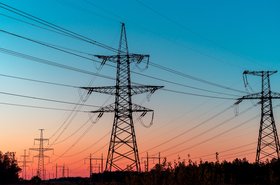European countries with lower levels of grid congestion are projected to see data center growth double compared to locations with higher levels, according to a report from energy data platform Ember.
The report found that by 2030, the Nordics and southern European states are expected to see demand grow by up to 110 percent compared to the established Frankfurt, London, Amsterdam, Paris, and Dublin markets (FLAP-D), which are only expected to increase by a rate of 55 percent (though from a larger base).
According to lead author and senior energy analyst at Ember, Elisabeth Cremona, “grids will be a make-or-break factor.”
The established FLAP-D markets are struggling with significant levels of energy demand from data centers, with between 33 and 42 percent of electricity demand across Amsterdam, London, and Frankfurt, and almost 80 percent in Dublin. At present, the FLAP-D markets currently account for 62 percent of Europe’s data center capacity.
As a result, the mature markets are expected to struggle to support the load growth of data centers projected across Europe. Ember projects that overall data center demand could increase by 150 percent between 2024 and 2035. As a result, developers are increasingly seeking locations where grid capacity isn’t strained and are deploying innovative measures for the sites of their new installations.
A point made by Cremona, who stated: “Countries investing now in innovative grids will more than likely emerge as Europe’s data infrastructure hubs in the years to come.”
As a result, the report predicts that by 2035, more than half of Europe’s data center capacity will be located outside the traditional markets. This is being compounded even further by the long wait times data centers are facing for a grid connection. The report contends that wait times – which can be up to 13 years in some jurisdictions – are deterring data centers, however, through strategic choices by system operators, it is possible to speed up the deployment of new data centers.
Solutions highlighted include strategic siting of data centers, incorporating flexibility, and applying smarter grid connection agreements. The latter could purportedly reduce time in the connection queue to just one year. Smart grid connection agreements include phased grid connections and non-firm grid connections, which permit collaborative infrastructure build-up.
Countries outside the traditional market that are expected to see the biggest growth include Sweden, Norway, and Denmark, where data center electricity demand is projected to triple by 2030. In addition, Austria, Greece, Finland, Hungary, Italy, Portugal, and Slovakia are projected to see an increase of three to five times by 2035 compared to 2024 levels.
Within the Nordics, the report argues that effective grid planning has made the region very attractive to developers. For example, the Danish TSO Energienet has since 2017 undertaken measures to position itself as a data center hub, through the construction of high-voltage substations, among other measures. As a result, Denmark has seen a capacity growth of 26 percent annually over the past five years.
Despite the massive growth projections, the report notes that the European Union is falling short of its goal of at least tripling its data center capacity within the next five to seven years, with it suggested that a doubling of capacity is more likely.
Read the orginal article: https://www.datacenterdynamics.com/en/news/nordics-and-southern-europe-to-see-110-data-center-demand-growth-by-2030-report/









